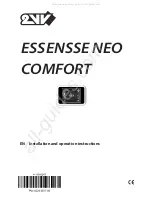
Chapter 8: Installation and Wiring
1
2
3
4
5
6
7
8
9
10
11
12
13
14
A
B
C
D
Do-more T1H Series PLC User Manual, 1st Edition, Rev. C
8-26
Powering I/O Circuits Using Separate Supplies
In most applications it will be necessary to power the input devices from one power source,
and to power output loads from another source. Loads often require high-energy AC power,
while input sensors use low-energy DC. If a machine operator is likely to come in close
contact with input wiring, then safety reasons also require isolation from high-energy output
circuits. It is most convenient if the loads can use the same power source as the Terminator
I/O system, and the input sensors can use the auxiliary supply, as shown to the left in the
figure below.
If the loads cannot be powered from the system supply, then a separate supply must be used
as shown to the right in the figure below.
Some applications will use the external power source to also power the input circuit. This
typically occurs on DC-powered systems, as shown in the drawing below to the left. The
inputs share the system power source supply, while the outputs have their own separate supply.
A worse-case scenario, from a cost and complexity view-point, is an application which requires
separate power sources for the Terminator I/O system, input devices, and output loads. The
example wiring diagram below on the right shows how this can work, but also the auxiliary
supply output is an unused resource. You will want to avoid this situation if possible.
Input Module
Auxiliary
+24 VDC
Supply
Power Input
Output Module
Loads
AC Power
+
–
Inputs
Com.
Outputs Com.
Input Module
Auxiliary
+24 VDC
Supply
Power Input
Output Module
Loads
AC Power
+
–
Inputs
Com.
Outputs Com.
Load
Supply
Input Module
Power Input
Output Module
Loads
DC Power
+
–
+
–
Inputs
Com.
Outputs Com.
Load
Supply
Input Module
Auxiliary
+24 VDC
Supply
Power Input
Output Module
Loads
AC Power
+
–
Inputs
Com.
Outputs Com.
Load
Supply
Input
Supply
















































